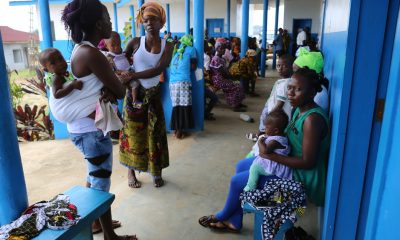Monrovia – More than two thousand (2000) Community Health Care Volunteers have been trained in disease surveillance and Response. The training was conducted by eight local non-governmental organizations that are implementing the Community Event Based Surveillance in eight of Liberia fifteen counties.
The organizations include SEWODA and APA in Maryland County, NAYMOTE in River Gee County, Equip Liberia, CHESS, and SEARCH in Nimba County, WOCDES in Grand Gedeh County, Peace Links and RUCEPS in Lofa County, CONHONL in Bong County and YAPA in Maryland County. These organizations were contracted by the International Organization for Migration to implement the CEBS program at county level.
The objective of the training was to enable the Community Health Volunteers to identify signs and symptoms of selected priority diseases such as Polio, Cholera, Bloody Diarrhea, Maternal and Neonatal Death, Measles, Meningitis, Yellow Fever, and understanding the Community Event Based Surveillance (CEBS) system and its implementation.
Community Events Based Surveillance seeks to rapidly collect information from community Events and diseases that are considered potential risk to public health. CEBS is a demonstrated tool that has been employed in previous disease outbreaks in different setting. It has been identified as a surveillance tool with the potential to improve early case identification, reduce transmission of diseases in the community and also enhance response efforts in Liberia.
According to the CEBS standard operating procedure use by IOM, the Ministry of Health of Liberia adopted and adapted the first World Health Organization (WHO) Disease Surveillance and Response in 2004 and made considerable progress to strengthen surveillance and response capacity in the country but was interrupted with the onset of the Ebola epidemic in 2014.
Since the inception of the CEBS project by the International Organization for Migration, County Surveillance Officers (CSOs), District Surveillance Officers (DSO), District Health Officers (DHOs), County Health Services Supervisors (CHSS) and Officers in Charge (OICs) of the eight implementing counties (Cape Mount, Gbarpolu, Maryland, Grand Gedeh, Lofa, River Gee, Nimba, and Bong) Counties have been working closely with CHVs to verify cases of priority diseases from the communities.
Community members of some of the counties visited by local voices reporter confirmed the existence of surveillance system put in place by IOM and its implementing partners. They (community) commended IOM for the project emphasizing that it has helped in encouraging them to regularly seek early medication at the clinic.
‘’we have our brothers in this community that going around to talk about sickness and also send us to the clinic. We tell IOM thank you because anything happened we can send our family to the clinic’’
The Community Health Volunteer who are at the frontline to identify diseases have also revealed that 99% of the cases of diseases are reported on a weekly basis and verified by the OICs since they started identifying signs and symptoms of priority diseases in their communities.
‘’since we started our identifying signs and symptoms of priority diseases in our various communities, we can say that 99% of the cases are sent to the clinic and he OIC will than verify if the person is suffering from a certain sickness to be treated early,” one volunteer said.
CEBS project is supported by the United States Agency for International Development USAID.
Report by: Ibrahim M. Sesay









































































































































































































































































































































































































































































































































































































